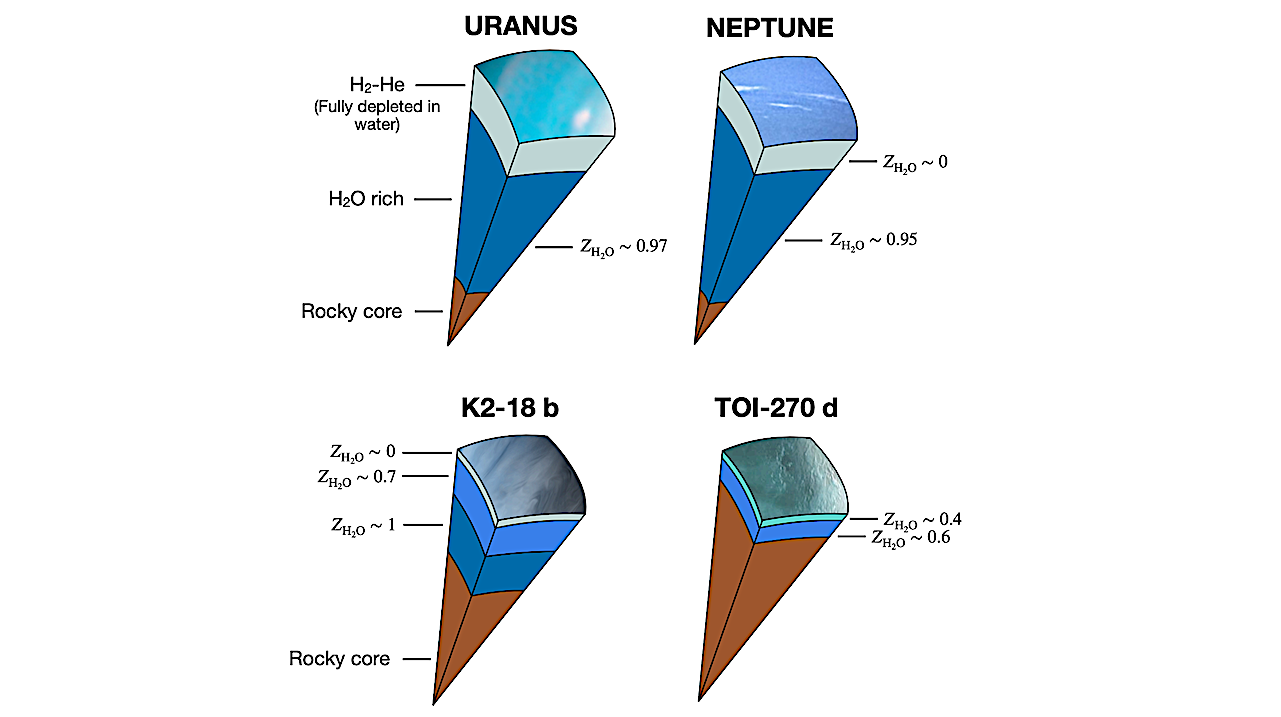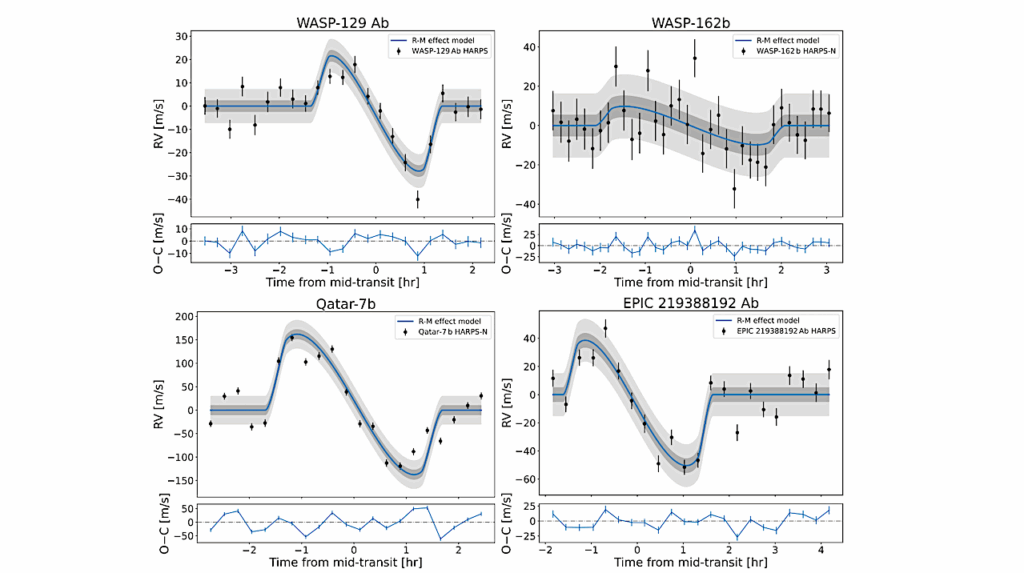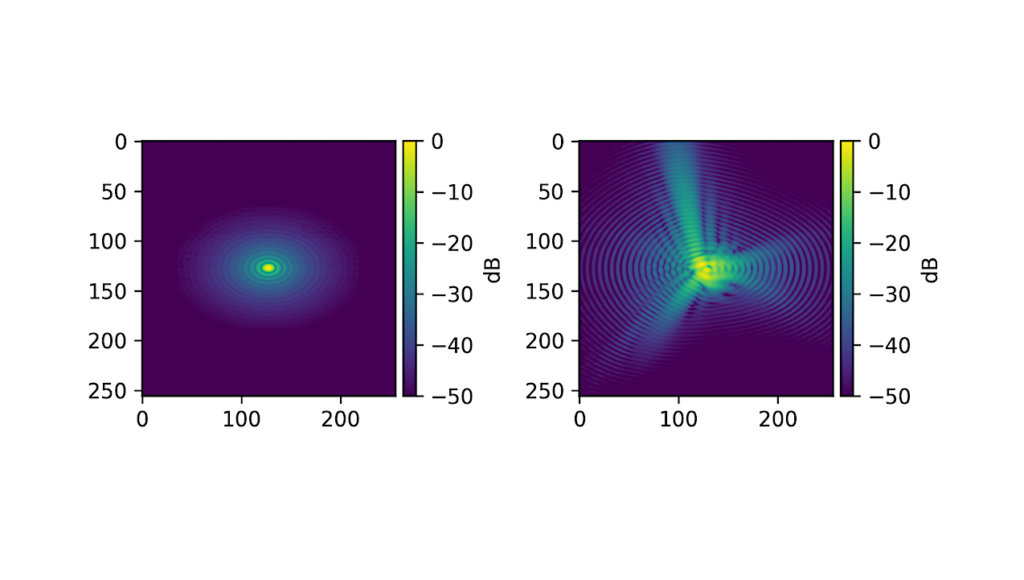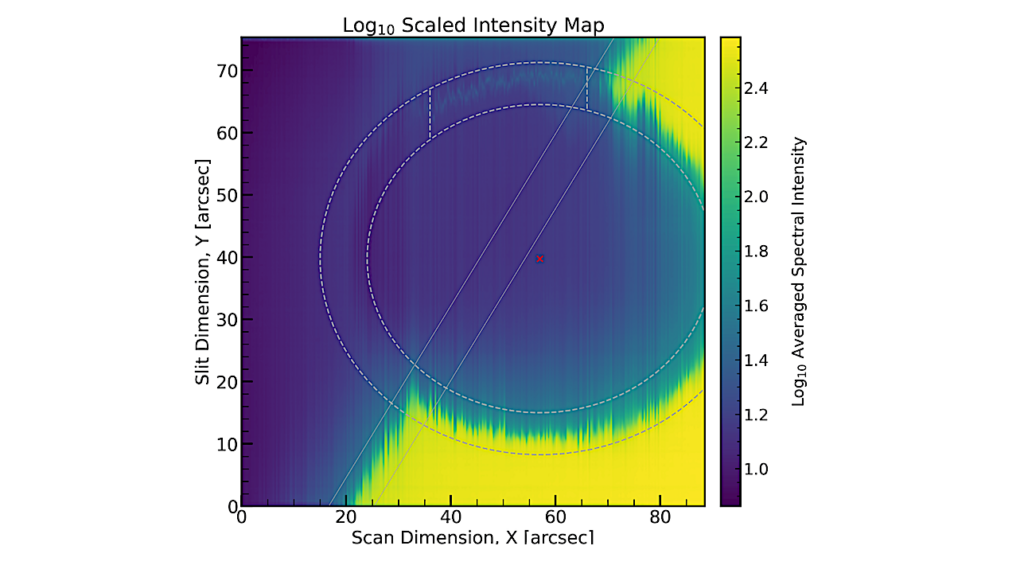The Possibility of Hydrogen-Water Demixing in Uranus, Neptune, K2-18b and TOI-270d

The internal structures of Uranus and Neptune remain unknown. In addition, sub-Neptunes are now thought to be the most common type of exoplanets.
Understanding the physical processes that govern the interiors of such planets is therefore essential. Phase separation between hydrogen and water may occur in cold, water-rich intermediate-mass planets. We assess whether it could occur in Uranus, Neptune, K2-18 b and TOI-270 d, and investigate its effect on the planetary evolution and inferred internal structure.
We couple planetary evolution models with recent ab initio calculations of the hydrogen-water phase diagram, allowing for temperature shifts to account for uncertainties in miscibility gaps.
We find that demixing may occur and could lead to a complete depletion of water in the outermost regions of Uranus and Neptune. Temperature offsets of up to 1100~K lead to a depleted region comprising as much as 16% of the planet’s mass, and an increase in planetary radius by nearly 20%. For K2-18 b, our models suggest that hydrogen-water demixing is ongoing and may explain the absence of water features in its JWST spectrum.
A temperature offset of 500~K is required to get a complete depletion of water in the atmosphere of K2-18 b. TOI-270 d may also have experienced hydrogen-water demixing. When applying a similar temperature offset on the phase diagram as for K2-18 b, we find a partial depletion of water in the atmosphere of TOI-270 d, consistent with JWST’s detection of water.
Hydrogen-water immiscibility may play a key role in shaping the structure and evolution of both Solar System giant planets like Uranus and Neptune, and cold/temperate exoplanets such as K2-18 b and TOI-270 d. Accounting for such internal processes is crucial to accurately interpret atmospheric observations from current (e.g., JWST) and upcoming (e.g., ARIEL) missions.
Saburo Howard, Ravit Helled, Armin Bergermann, Ronald Redmer
Comments: Submitted to A&A
Subjects: Earth and Planetary Astrophysics (astro-ph.EP)
Cite as: arXiv:2507.06288 [astro-ph.EP] (or arXiv:2507.06288v1 [astro-ph.EP] for this version)
https://doi.org/10.48550/arXiv.2507.06288
Focus to learn more
Submission history
From: Saburo Howard
[v1] Tue, 8 Jul 2025 18:00:00 UTC (25,255 KB)
https://arxiv.org/abs/2507.06288
Astrobiology,








